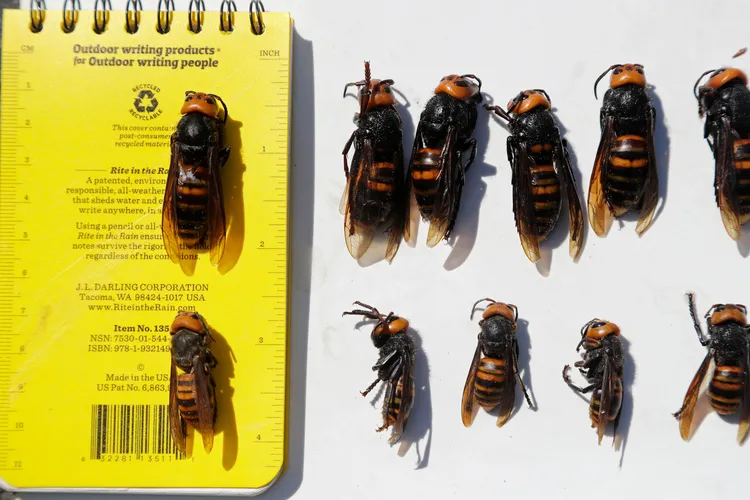The invasive insect commonly referred to as the "murder hornet" will soon be under control in the state of Washington. After closing up its pest trapping period for 2022, the Washington State Department of Agriculture (WSDA) stated no presence of the northern giant hornet.
When it comes to the pests that they survey for, the best news is no news, Sven Spichiger, WSDA managing entomologist, said in a press release last week.
It is still too raw to celebrate complete triumph over the hornet. It can take up to three years of no sightings of the hornet to be labeled "eradicated" under federal standards. But this instance was the first year without any sightings prior to the first report of a northern giant hornet in Washington state that set off alarms back in 2019.
The northern giant hornet, also known as Vespa mandarinia, is a highly invasive species native to Asia. It was first discovered in Washington state in 2019 and has since been spotted in several other locations in the United States and Canada. The hornets pose a threat to honey bees, which are already under threat from habitat loss, disease, and other factors.
Pestering Washington
The WSDA has been working to control the spread of the hornet by setting traps, tracking their nests, and educating the public about how to identify and report sightings. These efforts appear to be paying off, as no northern giant hornets were spotted during the 2022 pest-trapping season. While it is too early to celebrate complete victory over the hornet, the lack of sightings is a promising sign. The WSDA will continue to monitor the situation and take action if necessary to prevent the hornet from spreading further.
The "murder hornet," is a species native to Asia that poses a threat to honeybee populations. Just a few of these hornets can destroy an entire hive in a short amount of time. When in the "slaughter phase," the hornets go on a spree of decapitating bees. Eventually, they take over the hive and use the dead bees to feed their young.
In Japan, bees have developed a defense against invasive hornets by swarming and suffocating them. However, North American bees have not yet learned to do this.
A documentary called Nest Zero, which won an Emmy award last year, shows some of this behavior in action, as reported by The Verge.

No Sightings
Also known as the northern giant hornet, this species is the largest species of hornet in the world, growing up to two inches in length. They have long stingers that can pierce a beekeeping suit, and their venom is more toxic than that of bees. In response to sightings of these hornets in Washington state, the state's Department of Agriculture (WSDA) launched an "adopt a wasp" program to enlist the help of citizen scientists in locating the invasive species.
In October 2020, WSDA entomologists were able to find and destroy a northern giant hornet nest for the first time, using dental floss to track the hornets back to their nest. They then sealed off the entrances, wrapped the nest and the tree it was in with cellophane, and used a vacuum hose to suck up the hornets. Ultimately, they pumped CO2 into the surrounding trees to kill any remaining giant hornets.
The WSDA is asking the public to continue to be vigilant and report any sightings of the northern giant hornet in the coming year. The WSDA has provided an online Hornet Watch Report Form, and residents can also email hornets@agr.wa.gov or call 1-800-443-6684 to report sightings. The WSDA continues to work towards eradicating this invasive species from Washington state.
RELATED ARTICLE: Researchers from Washington State University Design Drones to Deter Pest Birds in Agricultural Fields
Check out more news and information on Environment in Science Times.
© 2025 ScienceTimes.com All rights reserved. Do not reproduce without permission. The window to the world of Science Times.











